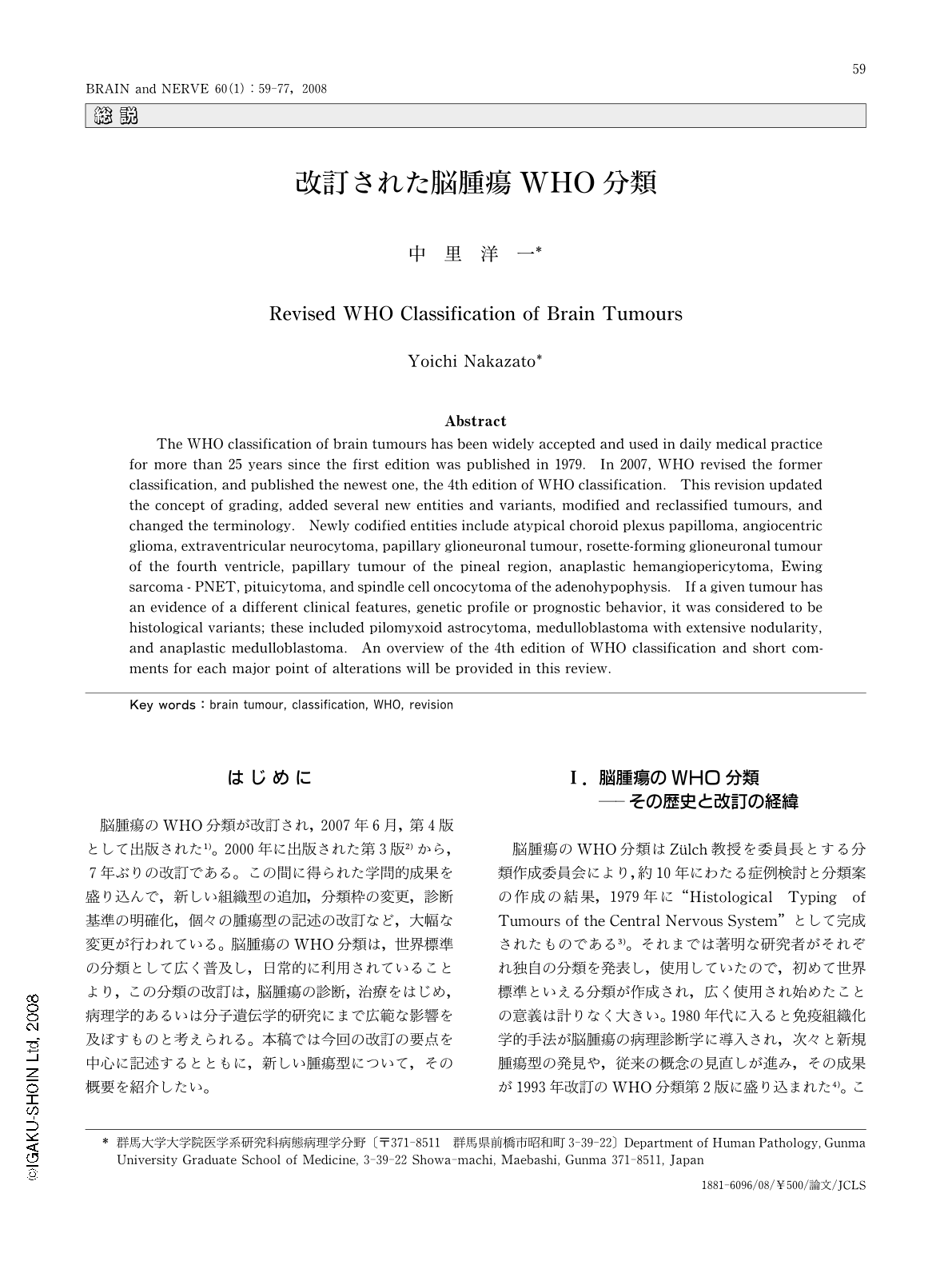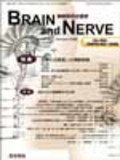Japanese
English
- 有料閲覧
- Abstract 文献概要
- 1ページ目 Look Inside
- 参考文献 Reference
はじめに
脳腫瘍のWHO分類が改訂され,2007年6月,第4版として出版された1)。2000年に出版された第3版2)から,7年ぶりの改訂である。この間に得られた学問的成果を盛り込んで,新しい組織型の追加,分類枠の変更,診断基準の明確化,個々の腫瘍型の記述の改訂など,大幅な変更が行われている。脳腫瘍のWHO分類は,世界標準の分類として広く普及し,日常的に利用されていることより,この分類の改訂は,脳腫瘍の診断,治療をはじめ,病理学的あるいは分子遺伝学的研究にまで広範な影響を及ぼすものと考えられる。本稿では今回の改訂の要点を中心に記述するとともに,新しい腫瘍型について,その概要を紹介したい。
Abstract
The WHO classification of brain tumours has been widely accepted and used in daily medical practice for more than 25 years since the first edition was published in 1979. In 2007, WHO revised the former classification, and published the newest one, the 4th edition of WHO classification. This revision updated the concept of grading, added several new entities and variants, modified and reclassified tumours, and changed the terminology. Newly codified entities include atypical choroid plexus papilloma, angiocentric glioma, extraventricular neurocytoma, papillary glioneuronal tumour, rosette-forming glioneuronal tumour of the fourth ventricle, papillary tumour of the pineal region, anaplastic hemangiopericytoma, Ewing sarcoma - PNET, pituicytoma, and spindle cell oncocytoma of the adenohypophysis. If a given tumour has an evidence of a different clinical features, genetic profile or prognostic behavior, it was considered to be histological variants; these included pilomyxoid astrocytoma, medulloblastoma with extensive nodularity, and anaplastic medulloblastoma. An overview of the 4th edition of WHO classification and short comments for each major point of alterations will be provided in this review.

Copyright © 2008, Igaku-Shoin Ltd. All rights reserved.


